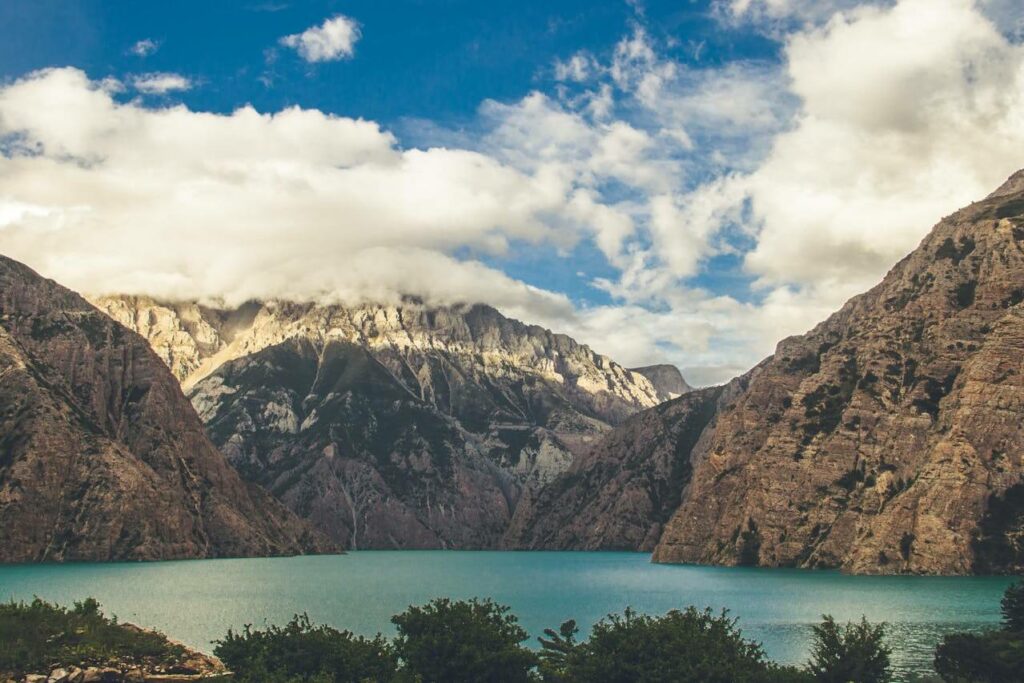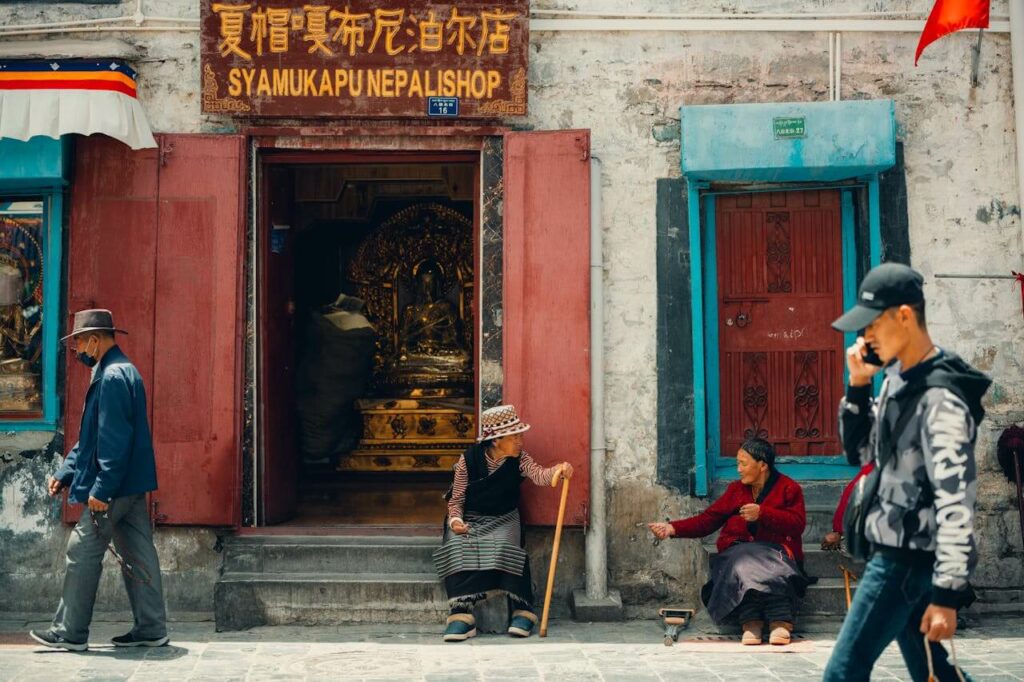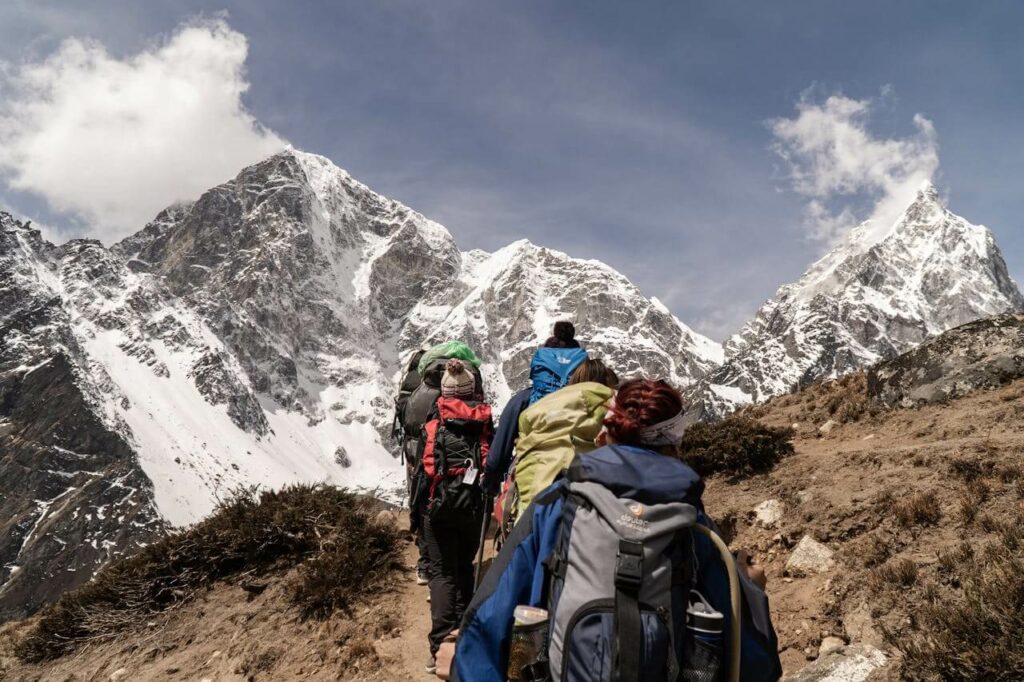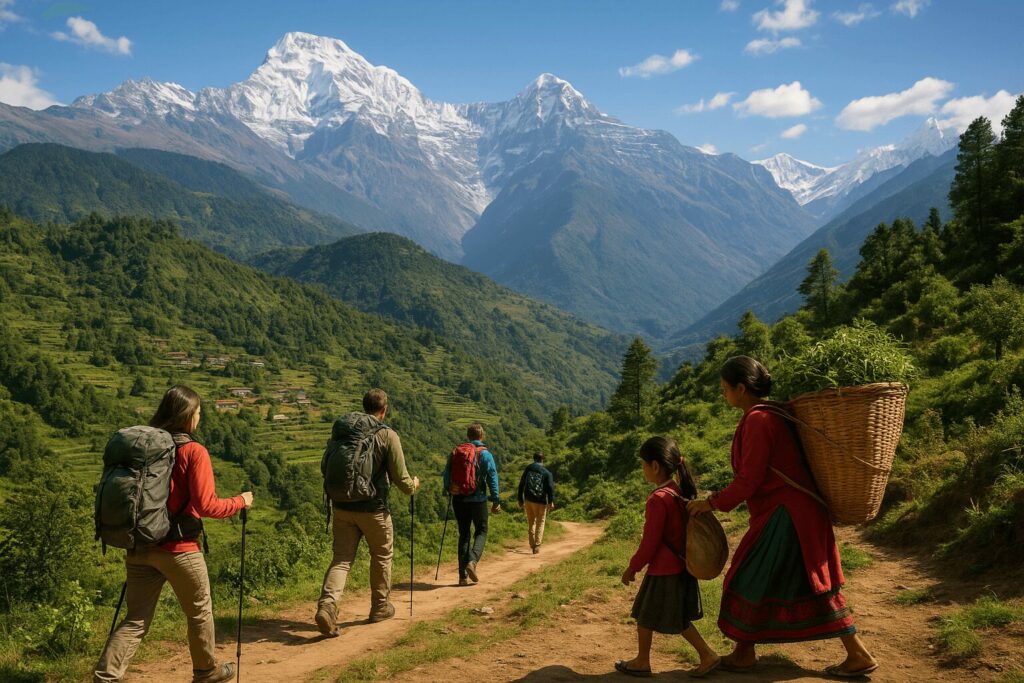
Nepal sustainable travel: protect Himalayas & aid locals
Ever dreamed of trekking the Himalayas, only to realize your adventure might hurt the very places you came to love? Nepal sustainable travel isn’t just a buzzword—it’s your roadmap to exploring responsibly while protecting fragile ecosystems and ancient cultures. In a few words, a perfect definition of ecotourism! We’ll show you how to strike a delicate balancing act between epic adventures and zero negative impact: think eco-friendly treks that minimize plastic waste, community-powered stays boosting local economies, and elephant-friendly safaris that preserve wildlife dignity. We’ll walk you through ethical porter policies, cultural dos and don’ts, and off-season travel perks that fight overtourism. Ready to turn wanderlust into positive action? Let’s dive in. 🌍
Article Takeaways
Ready to explore Nepal the sustainable way? 🏔️ Ditch single-use plastic (grab a filter bottle!) and skip elephant rides—those « cruelty-free » safaris exist. Support local homestays, tip guides fairly (10-15 USD/day!), dress modestly. Why? This delicate balancing act 🌿 protects Nepal’s beauty and boosts its economy. Pro move: Pack out trash—even batteries. Your trek just got greener!
- So You Want To Travel To Nepal Sustainably? Here’s The Deal 🏔️
- Leave No Trace: Protecting Nepal’s Incredible Environment
- Your money matters: how to support local communities the right way 💰
- A Traveler’s Guide To Nepali Culture And Etiquette
- Ethical encounters with nepal’s wildlife 🐘
- The smart traveler: how sustainability and safety go hand-in-hand
- Putting it all together: your sustainable nepal action plan
So You Want To Travel To Nepal Sustainably? Here’s The Deal 🏔️
Ever dreamed of standing beneath the Himalayas, breathing crisp mountain air, or wandering through ancient temples? Nepal’s magic is real—but it comes with responsibility. Nepal sustainable travel isn’t a buzzword here; it’s survival. With tourism contributing 6.6% of the country’s GDP, the stakes are high. But here’s the catch: unchecked travel harms fragile ecosystems and communities. Ready to explore the balance? Let’s dive in.
Think of it as a “delicate balancing act.” Sustainable travel means more than picking up trash. It’s about supporting local communities actively—from sipping tea in family-run lodges to hiring local guides (tip: aim for $10-15/day). The pandemic crushed tourism, costing $330 million in revenue, but recovery brings hope. Initiatives like the Nepal Tourism Board’s Sustainable Tourism Project (STP) aim to create 2,500 green jobs by 2028. Your choices? They fuel this shift.
But tread carefully. Climate change threatens Himalayan trails, and overcrowding scars sites like Ghorepani. Plastic waste litters paths, and road expansion risks rhododendron forests—key habitats. Want to make a difference? Avoid elephant rides (check out ethical options like Tiger Tops Camp), skip imported goods, and opt for off-season adventures to ease pressure on popular routes. The Nepal Sustainable Tourism Network (SSTN) and EcoCamp Annapurna lead the way—why not back them?
Curious how your trip impacts lives? Stay tuned. We’ll serve straight-up advice to protect Nepal’s soul while creating memories that last. Spoiler: it’s cheaper than you think. Let’s rock this adventure the right way. 🙌
Sustainable Tourism in Nepal (SSTN)

Leave No Trace: Protecting Nepal’s Incredible Environment
Kicking Plastic to the Curb
Alright, let’s talk about 💧 and ♻️! Nepal banned single-use plastic bottles in 2020, but they’re still everywhere. Why? Because alternatives aren’t always easy. Your mission? Bring a reusable bottle with a built-in filter—like a SteriPEN or tablets. Trust me, it’ll save you from buying 50+ plastic bottles on the Annapurna Circuit! Plus, tea houses in Annapurna now offer filtered water stations. Fill up and support local infrastructure—it’s a smart move. 💡
Pro tip: Tea houses sell boiled water for ~$1 per cup. Pair your bottle with a straw filter (removes 99% of nasties) and toss in some chlorine tablets for backup. Say no to plastic straws—every small win adds up! 🌍 Pack a lightweight mesh bag for market buys to avoid plastic packaging. Ever thought about how much trash 1 million trekkers create? Let’s keep those remote trails clean! 🏞️
What to Do with Your Trash on the Trail?
Here’s the golden rule: pack it in, pack it out. Seriously, even that banana peel takes years to decompose in cold Himalayan zones. Most importantly: return used batteries to Kathmandu (Doko Recyclers handles e-waste) or take them home. 💥 Pro tip: Toss a mini reusable bag in your pack for collecting trail trash. Picking up one plastic bag makes a difference!
Feeling extra? Grab a stray plastic bag you spot on the trail. It’s a nice touch that makes a big difference. Remember, Nepal’s waste systems are fragile—Kathmandu alone handles 1,200 tons of trash daily, but remote areas? They’re not so lucky. 🌿 Ever heard of the « pack out » movement? Some trekkers even weigh their trash to challenge friends. Creativity sparks change!
Trekking with a Green Heart
Think of the trails as nature’s red carpet—stay on them! Going off-path erodes soil and kills plants. And those pretty alpine flowers? Let them be. Picking them or touching sacred fossils (shaligrams) isn’t cool. Respect local beliefs—they’re not just pretty rocks! 🏔️ Oh, and check your steps near prayer flags—disturbing them disrupts spiritual vibes.
Now, about firewood. Deforestation is real—over 60% of households rely on it. Solution? Choose tea houses using solar or kerosene. Yeah, it’ll set you back $1-2 extra per night, but you’re saving forests. Bonus: Skip wild camping. It’s tempting, but the 2023 rule says all foreign trekkers need guides—keeps trails intact and supports local jobs. Win-win! 👩🌾 Pro tip: Ask your guide about eco-certified tea houses. Places like EcoCamp Annapurna use solar-powered showers and compost toilets. Small choices, big impact! 🌱

Your money matters: how to support local communities the right way 💰
Spend local, feel global
Alright, let’s talk turkey. Your wallet can boost Nepali communities. Choose family-run homestays over big hotels – they’ve got that cozy vibe you won’t find in sterile lobbies. Check out Kathmandu’s Sustainable Steps Trekking Network for authentic stays. Craving momos? Hit tiny street stalls, not tourist traps. Buy handmade jewelry directly from Bhaktapur’s artisans. Visiting during monsoon (June-Sept) spreads tourism cash yearly – less crowded trails + stronger economy 🌧️✨ Pro tip: Thamel’s local markets offer more than trinkets – hunt for handwoven dhaka topi caps or organic turmeric grown in mountain villages.
The truth about tipping and handouts
Pro tip: daily tips transform lives. Guides get 10-15 USD/day, porters 5-10 USD/day – they’ll haul your gear through Everest-level challenges! But hard pass: never hand cash/sweets to kids. It fuels begging and skips school. Studies show many “orphans” have parents – traffickers exploit donors’ kindness.
Want to help? Donate to local schools or Pokhara’s centers. Bring unused headlamps/water filters as practical gifts for homestays – think of it as future-proofing your goodwill. 💡 Pro tip: Pack extra blister plasters or electrolyte tablets for guides – small stuff they’ll actually use.
Are you hiring an ethical trekking company?
Let’s get real about porter rights. Ask these 4 questions before booking:
- How much weight do porters carry? Legal limit is 30kg, but ethical agencies cap at 20-25kg
- Do staff have helicopter evacuation insurance? Lifesaver at 4,000m – and a legal requirement for SSTN-certified operators
- Are they given proper gear? No threadbare gloves or leaky boots – quality kit reduces altitude-related injuries
- What’s your tipping policy? Clear structures prevent exploitation. Some agencies even share salary breakdowns online!
Book with Responsible Travel-certified companies – they vet fair practices. Bonus: ethical companies often partner with women’s tea-house cooperatives – your tea breaks support gender equality too. 🏔️
The « voluntourism » trap you must avoid
Heads up: orphanage volunteering fuels exploitation. ⅔ of “orphans” have parents – traffickers trick families for donor cash. Skip fake orphanages; support schools funding programs or women’s weaving programs where grandmothers teach traditional haku patasi skirts.
Craving purposeful travel? GVI’s Pokhara programs let you teach English without disrupting families. Projects Abroad focus on community uplift, not institutions. Your time should build futures, not feed cycles. 🚫exploitation And hey – if you’re fluent in French or data analysis, offer free skills to local NGOs during downtime. Small acts = big impacts! Example: Kathmandu Living Labs crowdsources map data for disaster preparedness – you can volunteer tech skills for free 1-2 days/week.

A Traveler’s Guide To Nepali Culture And Etiquette
How To Be A Respectful Guest In Nepal
Alright, let’s talk about respecting Nepali culture without overcomplicating things 🙏. Start with Namaste – hands pressed together in front of your chest, palms touching. It’s more than a greeting; it’s a universal sign of respect. No need for handshakes unless locals initiate.
When dressing, think modesty. Cover shoulders and knees, especially in villages or temples. This isn’t about fashion – it’s about showing you value their traditions. Trust us, lightweight cotton clothes work wonders in the Himalayas and local markets.
Hands up! The left hand? Reserved for “dirty” tasks (yep, we’re getting real). Always use your right hand to pass money, eat, or hand items. Pro tip: Touch your left elbow with your left hand when offering something with your right – it’s a subtle but appreciated gesture of humility.
Heads are sacred, feet are… not. Avoid touching anyone’s head (even kids!), and never point your soles at people or religious sites. Accidentally bump into someone? Apologies involve touching their shoulder or your own feet, then your forehead. Culture tip: This body language map makes more sense once you’re there!
Photos? Always ask first. A smile and finger gesture works better than a cold “Can I take your picture?” Bonus: Buying local portraits from street artists supports creative communities ethically.
Your Cheat Sheet For Cultural Do’s And Don’ts
| Situation | Do 👍 | Don’t 👎 |
|---|---|---|
| Greeting someone | Say ‘Namaste’ with palms joined | Offer a handshake unless they initiate |
| Eating or passing objects | Use your right hand only | Use your left hand |
| Visiting a temple or stupa | Walk clockwise. Remove shoes before entering | Wear revealing clothes. Take photos inside without permission |
| Interacting with people | Ask permission before photos. Be patient | Touch heads. Point feet at anyone |
| Public behavior | Dress modestly (shoulders/knees covered) | Public displays of affection |
Need a quick reference? This table’s got your back! Remember, these aren’t arbitrary rules – they’re centuries of tradition keeping Nepal’s cultural fabric intact. Follow these, and you’ll blend right into the Himalayan vibe while supporting Nepal sustainable travel concept by protecting both environment and heritage.
Ethical encounters with nepal’s wildlife 🐘
Why you must skip the elephant ride
Alright, let’s talk about elephant rides. That bucket-list experience? Think again. 🤔 The « phajaan » process – where baby elephants are separated from mothers and broken through fear – isn’t just outdated; it’s brutal. Even if newer camps skip this trauma, forcing these giants to carry weight strains their spines long-term. Think of it as carrying a backpack 24/7 – your back would thank you for avoiding it, right? Disrupting social bonds and natural behaviors? Not cool either.
Pro tip: Skip elephant « sports » like polo too. These activities prioritize human thrills over animal welfare. If wild animals are performing, it’s usually for profit, not conservation.
How to see wildlife the right way
Want that wildlife fix without the guilt? Chitwan and Bardia National Parks deliver epic jeep safaris where you’ll spot rhinos, tigers, and elephants in natural habitats. 🐅🌿 No chains, no forced tricks – just raw nature magic. Rangers use camera traps and foot patrols against poaching here.
Check out these ethical gems:
- Tiger Tops Elephant Camp: Watch elephants bathe, snack on sugarcane, and nap stress-free. Zero riding. Supports mahout families via eco-tourism.
- Stand Up 4 Elephants’s « Happy Hour »: Observe rescued elephants roaming free. No saddles, no stress. Partners with SSTN for wildlife protection.
Quick checklist of activities to avoid (you’ll sleep better at night):
- Elephant back riding or « sports »
- Snapping selfies with snakes/monkeys on leashes
- Buying ivory or shahtoosh shawls (made from endangered Tibetan antelope wool)
- Feeding temple monkeys – messes up diets and fuels aggression
Park fees fund 30-50% of local schools/roads. Visit Jan-May for prime wildlife viewing when animals gather around water sources. Choose ethical options to protect ecosystems and support locals. 🌍✨

The smart traveler: how sustainability and safety go hand-in-hand
Why a good tour operator is your best safety net
Alright, let’s talk ethics and safety in one go! 🌍 Choosing a responsible tour operator isn’t just about doing good – it’s your golden ticket to staying safe in the Himalayas. Reputable local agencies treat porters fairly, and this ethical treatment directly translates to better safety standards. Think of it as a safety net made of ethics!
These operators invest in quality gear, experienced guides, and solid emergency protocols. When your guide knows how to handle altitude sickness because they’ve been properly trained (not just because they’re chasing tips), you’re in good hands. And those « worth the splurge » permits they handle? They’re not just bureaucracy – they’re your official pass to safe trekking zones.
Getting around nepal safely and sustainably
Let’s talk wheels! 🚗 Kathmandu’s green transport initiatives are picking up speed, with studies on sustainable transport policies showing real progress. But here’s the deal: while electric buses are coming, most local transport still needs a green nudge.
Local buses give you authentic vibes without breaking the bank, but watch for overcrowding and sketchy roads. For safety? Grab a taxi from a trusted company – your hotel can hook you up with reliable options. Pro tip: those « shared jeeps »? They’re budget-friendly but check their maintenance first. A wobbly wheel isn’t the Himalayan surprise you want!
A heads-up for all travelers
Let’s keep it real about safety essentials. 💡 Nepal’s pretty chill crime-wise, but pickpockets play hide-and-seek in Thamel’s crowded alleys. Keep your cash stash diversified – some cash in a hidden belt, some in your shoe, and digital copies of documents handy. Tech tip: download offline maps before hitting the road.
Solo female travelers, listen up! A quick fashion tip: modest dressing isn’t just respectful – it’s your secret weapon against unwanted attention. And seriously, that travel insurance covering helicopter evac? Not optional. It’s your lifeline when mountain emergencies strike. Think of it as your « just in case » parachute.
Putting it all together: your sustainable nepal action plan
When’s the best time to go (for you and for nepal)?
Craving epic Himalayan views without the selfie-stick crowd? 🏔️ Monsoon season (June-September) might surprise you! While rain and landslides are real, your visit during this « quiet season » keeps local businesses afloat when income drops 40%. Trekking routes transform into lush paradises minus the stampede of hikers.
High season (spring/autumn) delivers postcard-perfect panoramas—but at a cost. Over 500,000 trekkers hit Nepal annually, mostly during these months. Visiting off-peak isn’t just budget-friendly (lodges drop prices by 30%), it’s your chance to protect trails eroding under 20,000+ footprints daily.
Look for these names and initiatives
Progress is hiking forward! 🌍 The Sustainable Tourism Network Nepal (SSTN) now certifies eco-lodges using solar power and composting toilets. Meanwhile, the Mira Rai Initiative trained 50 new female trail guides in 2024, making Himalayan trails safer and more inclusive. This isn’t tokenism—it’s trailblazing.
Post-quake recovery gets a green twist through the UNDP’s Sustainable Tourism for Livelihood Recovery Project—6,000 locals built eco-infrastructure like waste-free rest stops along Everest Base Camp trail. Your tourist dollar isn’t just buying memories—it’s funding Nepal’s future.
Your final sustainable travel checklist ✅
Here’s your Nepal Sustainable Travel list:
- Pack a reusable water bottle with a filter – skip single-use plastic!
- Book at family-run teahouses – your rupees directly boost local economies
- Quiz trekking agencies: “Do your porters get oxygen masks and $4/day?” (They should!)
- Keep it modest – avoid short skirts/shorts in villages where traditional gunyo cholo or suruwal dominate
- Say NO to elephant rides (Chitwan’s Happy Hour by Stand Up 4 Elephants is legit!)
- Trash stays in your backpack – those 500 plastic bottles you’d toss? They’d take 40 years to decompose in mountain streams 🚫
- Flash a Namaste smile – it’s free and instantly connects you with locals
Absolutely, mate! You’re ready to explore Nepal in a way that’s good for you and the country. 🙏 Start at SSTN—happy trails! 🥾
Ready to explore Nepal responsibly? Stick to your checklist—reusable gear, local stays, ethical tours. Support initiatives like SSTN and the Mira Rai project. Visit off-season to ease overcrowding. You’re not just sightseeing; you’re preserving Nepal’s beauty. Eco-friendly choices mean epic adventures without the guilt. Namaste and happy trails! 🏔️

Q / A About Nepal Sustainable Travel
Is it ethical to travel to Nepal?
Absolutely, mate! But it’s all about how you do it 🌍 Nepal’s tourism can be a win-win if done right! When you choose eco-lodges, support local businesses, and avoid unethical practices like elephant rides or orphanage volunteering, you’re helping protect this Himalayan gem. The key? Opt for agencies that respect porter rights (like proper gear & fair wages) and avoid contributing to overtourism by visiting during shoulder seasons. Think of it as being part of the solution, not the problem! Get more tips here by checking our sustainable traveller guide.
Is Nepal safe for tourists right now?
Yep, Nepal’s generally safe for travelers 🛡️ While petty crime exists (keep an eye on belongings in Thamel!), serious threats are rare. For treks, always book with reputable companies that prioritize safety protocols and helicopter evacuations. Solo female travelers should stay cautious but enjoy the magic – dress modestly and avoid night travel in remote areas. Current travel advisories show green lights for most countries, including the US!
What are the sustainable tourism practices in Nepal?
Your Nepal Sustainable Travel starts with three big ones to rock: 1) Pack that filtered water bottle! 💧 Plastic pollution is real here. 2) Go local! Book family-run homestays and eat at mom-and-pop restaurants. 3) Ask your trekking company about porter policies – 30kg max load is the ethical standard. Oh, and skip elephant rides! Check out Chitwan’s ethical elephant camps where these gentle giants live freely. Bonus points if you hike during monsoon season to spread tourism $$$ love!
Is Nepal worth visiting for tourists?
1000% worth it! 🏔️ From Kathmandu’s ancient temples to Annapurna’s trails, Nepal delivers epic adventures AND cultural depth. Just plan smart – hire local guides (they know the land & people best!) and support businesses with green practices. Pro tip: Visit during monsoon for lush landscapes and fewer crowds. Your trip here doesn’t just create memories – it can create positive change!
Is Nepal safe for U.S. citizens?
Yup, US travelers get the same safety tips as everyone else! 🇳🇵 Be street-smart in tourist zones, keep digital copies of your passport, and rock that travel insurance with heli-evac coverage. Current US government advisories show green lights for most regions. Extra tip: Register with STEP (Smart Traveler Enrollment Program) for emergency updates.
What are the do’s and don’ts in Nepal?
DO: Master the « Namaste » greeting, pack out all trash (especially batteries!), and ask before snapping selfies with locals. Dress modestly in temples (shoulders/knees covered) and always use your right hand for eating/handling stuff. DON’T: Pet random dogs (stray population is huge), touch people’s heads (super sacred!), or support animal shows. Oh, and keep public PDA to a minimum – Nepalese culture prefers romance behind closed doors 😉
Is Nepal safe for females?
Mostly yes, but smart travel hacks keep things smooth 🛶 Dress conservatively (think long sleeves in villages), avoid solo night walks, and book female-friendly tour operators. Many companies now offer women-only trekking groups – perfect for connecting with fellow adventurers! The #1 tip? Trust your gut – Nepal’s hospitality is real, but street smarts keep it that way.
Do they speak English in Nepal?
You’ll get by with English in tourist zones! 🗣️ Kathmandu guidebooks and trekking agencies use it regularly. But don’t expect fluency everywhere – learn basic Nepali phrases like « Namaste » (hello) and « dhanyabad » (thanks). Bonus: Locals will appreciate your efforts! In remote areas, communication might involve more smiles than sentences – and that’s part of the charm
When should you avoid visiting Nepal?
Avoid monsoon madness (June-Sept) if trekking – landslides block trails! 🌧️ But if you’re into lush landscapes and fewer crowds, it’s a secret pro tip. Winter (Dec-Feb) brings freezing mountain nights, but clear skies for Everest views. Peak seasons (Oct-May) offer perfect weather but expect higher prices and busy trails. Pro move: Visit April/May for blooming rhododendrons or Sept-Oct for post-monsoon freshness!
